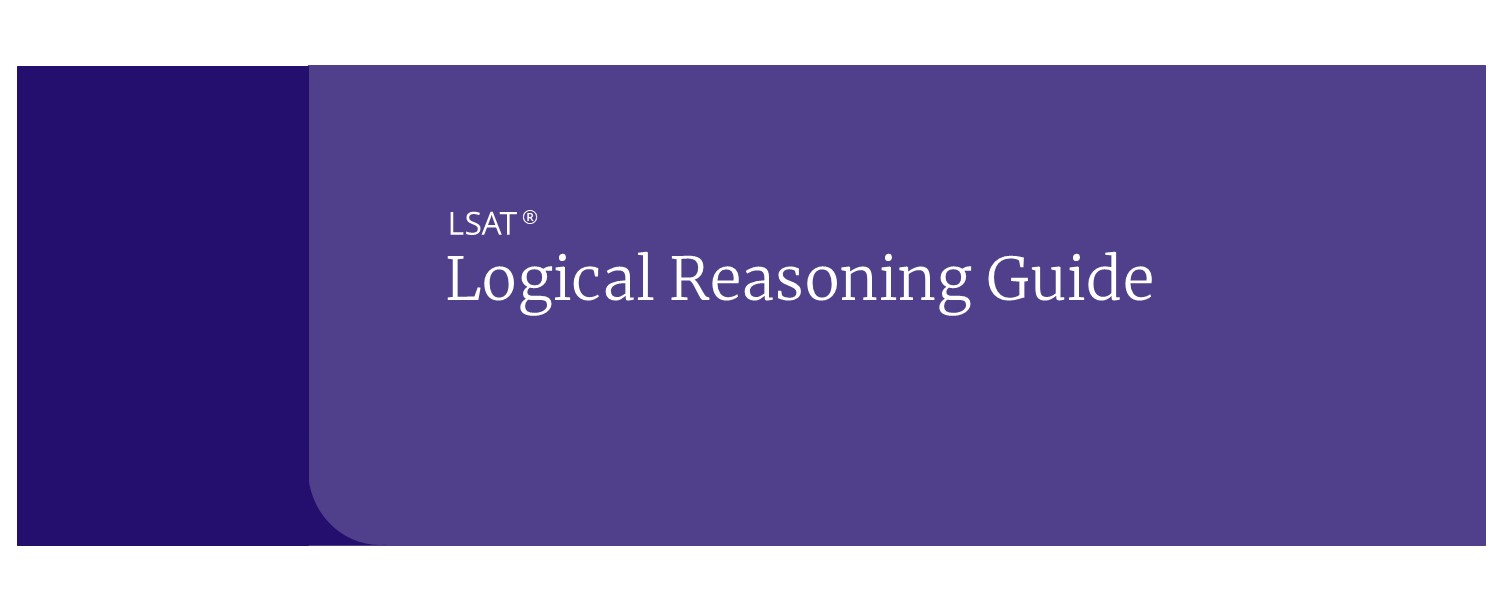LSAT Logical Reasoning: Flaws & Common Flaws
Flaw questions are another often-seen challenge on the LSAT. The central error in reasoning on LSAT flaw questions always comes down to the same thing: the evidence presented doesn’t logically lead to the conclusion. You can’t argue with the evidence itself, so don’t be distracted by answer choices that directly contradict what’s stated in the argument. However, you CAN argue with the way the evidence was obtained or interpreted, or with how it is connected to the conclusion. Let’s look at a couple of examples.
Flaw Example 1
High school students are 5 times more likely to participate in volunteer work than are men and women over 40. Of those people who volunteer, high school students are also twice as likely to donate more than 7 hours per week to volunteer work as are those over 40. Thus, it must be true that high school students are more aware of the ways that volunteer work benefits the community than are any other group of people.
Here, the problem is that the evidence as given doesn’t support the conclusion. All of the evidence focuses on volunteer participation and the amount of volunteer work done. But the conclusion is about recognizing the value of volunteer work. That shift is a serious flaw; the key to recognizing that flaw is keeping an eye out for terms that appear in one part of the argument—evidence or conclusion—and nowhere else.
Flaw Example 2
A recent study of students at Calumet University showed that students on the Calumet University rugby team were considered by their peers to be more academically successful and of higher social status than were students in the marching band. Therefore, Clayton, a Houghton University tennis player, should quit tennis and join the rugby team if he wants to be more popular and get better grades.
This argument has multiple flaws. Let’s look at them individually:
- Evidence is given only about Calumet University students, but the conclusion is about a single Houghton University student. The applicability of evidence about one geographical area to another area is questionable, as is evidence about one small group to one single case. A larger, more geographically relevant sample size would help here.
- The evidence given compares rugby players to marching band members, but the conclusion is about a tennis player. A conclusion about a tennis player would be better supported by evidence about a tennis player.
- The conclusion makes a recommendation for a course of action that would allegedly help Clayton be more popular and get better grades. But the evidence only describes peers’ perceptions of rugby players, which might be relevant to popularity, but do not provide a solid basis for a conclusion about their grades. Peer perceptions are not a sufficient basis for a conclusion about a numerically measurable issue like grades.
An answer choice addressing any one of these flaws would be correct. A strong test-taker will notice flaws as he or she reads, and will be looking for an answer choice addressing one or more of the predicted flaws. Don’t go to the answer choices without at least one prediction in mind of a pre-identified flaw; tempting wrong answer choices can easily lead you astray and cost you time or points if you let them guide your evaluation, instead of taking control and navigating actively through the answer choices.
Flaw Example 3
Catherine is thinking about getting a kitten. She would like to adopt from the local animal shelter, but she recently read an article in which owners of purebred cats purchased from cat breeders reported a low incidence of health or disciplinary problems with their pets. Catherine should therefore purchase her new kitten from a cat breeder.
The reasoning in this argument is questionable because it makes a recommendation based on self-reported information from cat owners. Self-reported data can easily be weakened by the suggestion that the people surveyed lied. More objective data is better for supporting a conclusion. Also, the evidence given doesn’t discuss animal shelter cats, so there’s insufficient support for concluding that purebred cats are preferable.
Overall, the key to identifying the flaw in a LSAT question is having an understanding of common flaw types. The general rule is that the flaw will either lie in the reliability of the evidence itself or in the terms of the conclusion that is drawn based on the evidence.
Common Flaw Types
As we’ve seen, flaw questions on the LSAT follow predictable patterns: the flaw always in some way addresses either how the evidence is being interpreted to lead to the conclusion, or how the evidence was obtained. Let’s take a look at a few specific examples of common LSAT flaws.
Real Numbers v. Percentages
At Smith Corporation, 25% of the male executives took advantage of the corporate “Family Leave” program last year, enjoying 6 weeks of paid sabbatical after a birth or adoption in their families. Only 8% of female executives at Smith Corporation took advantage of the program. Therefore, it appears that more male executives than female executives at Smith Corporation are interested in programs that promote leave options for personal reasons.
There are actually two major flaws here, and we’ll look at the one that ISN’T the title of this sub-section first, just to get it out of the way: the evidence isn’t sufficient to support the conclusion. The conclusion is about the “interest” of executives in “programs that promote leave options for personal reasons,” but the evidence only discusses percentages of executives who were involved in one specific program. Drawing a conclusion about programs in general based on that evidence is unsound. Also, participation alone is not necessarily indicative of the interest in the programs; maybe people ARE interested, but just haven’t had new babies in their families.
The more standard flaw here, though, is the “real numbers versus percentages” issue. Evidence is presented about percentages, and based on that evidence, a conclusion is drawn about quantity. But the conclusion is flawed: what if there are 100 male executives at Smith Corporation, and 350 female executives? In that case, there would be 25 male executives taking Family Leave, and 28 female executives; since 28 is clearly more than 25, the conclusion would not be properly drawn in that case. We can see, then, that percentage evidence alone is not sufficient to support a conclusion regarding “real number” quantities.
Causation v. Correlation
Studies focusing on Alaskans show that single men have an average lifespan of 74.1 years; married men have an average lifespan of 76.4 years. However, married women live an average of 74.4 years, 2.1 years less than single women, who have an average lifespan of 76.5 years. Researchers have concluded, based on the data from those studies, that husbands suck the life-force out of their wives, prolonging their own lives at the cost of their spouses’ longevity.
First of all, the premise behind that scenario is absolutely a joke; just trying to bring a little levity to the LSAT preparations here! But seriously, the issue here is that there is a correlation between two occurrences (the increased lifespans of married men and the decreased lifespans of married women) and the argument inappropriately assumes that there must be a causal link between those occurrences. Whenever you see an argument that presents two events—let’s call them X and Y– that occur together, and that then concludes that one event, X, must be causing the other event, Y, you should look for the possibility that Y in fact causes X, or that some outside factor, Z, is causing both X and Y.
In order to successfully navigate the AuSable Trail, a 57-mile hiking trail fraught with unsteady terrain, one must have a pair of supportive hiking boots. Andrew recently purchased a pair of the most comfortable and supportive hiking boots on the market. Therefore, Andrew should have no trouble navigating the Ausable Trail when he goes on his hiking trip next month.
In flaw questions, the application of necessary/sufficient is simpler than in other questions. The correctly-identified flaw here would be that the argument takes a condition that is necessary for achieving the goal of completing the hike, and has treated it as though it is sufficient. Good boots are necessary; without them, Andrew couldn’t make the hike. But are they ENOUGH? What if Andrew has an awful case of the flu and can’t even get out of bed, let alone go for a 57-mile hike? The boots are not, by themselves, SUFFICIENT to ensure success on the hike. As a reader, be on the lookout for arguments that don’t differentiate between necessary and sufficient conditions.
These common flaw types consistently appear on the LSAT; keep practicing on Grockit to improve your ability to spot them and improve your performance on critical reasoning questions! Overall, the key to identifying the flaw in a LSAT question is having an understanding of common flaw types. The general rule is that the flaw will either lie in the reliability of the evidence itself or in the terms of the conclusion that is drawn based on the evidence.
Previous: Logical Reasoning: 5 Tips for Inferences
Next: Logical Reasoning: Parallel and Parallel Flaws





